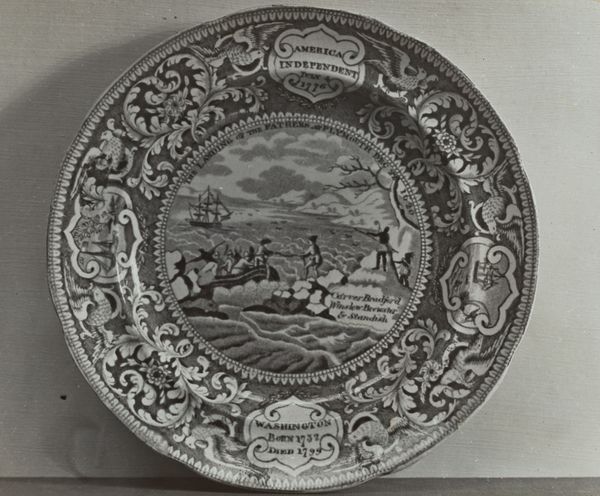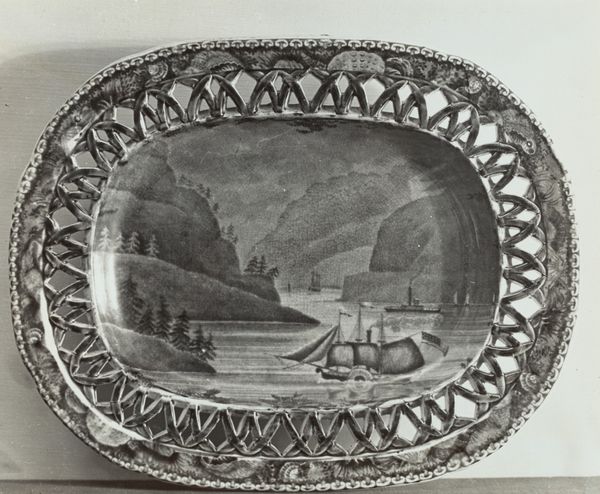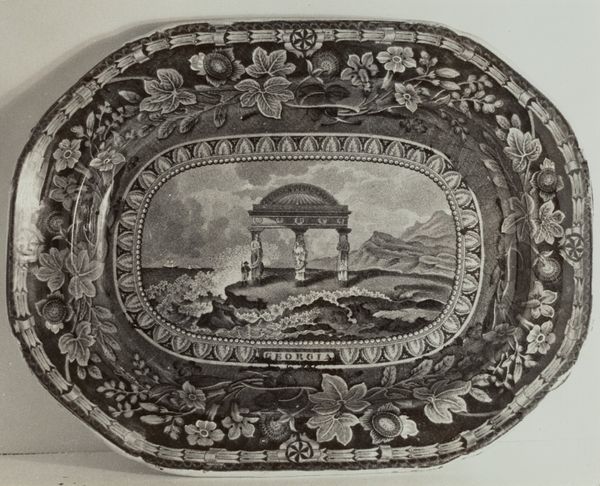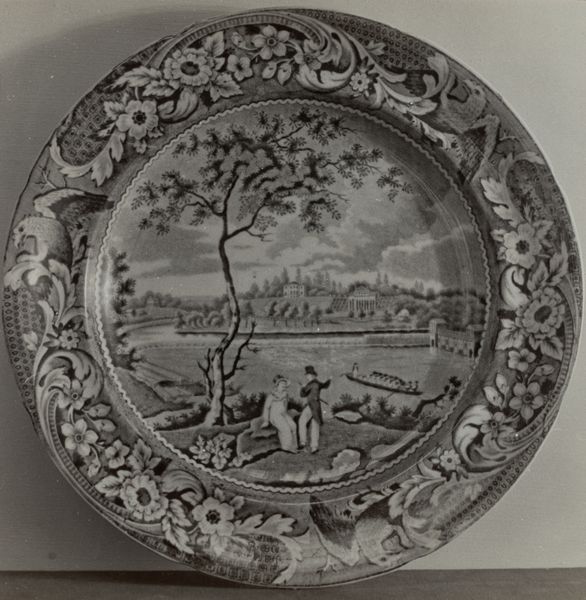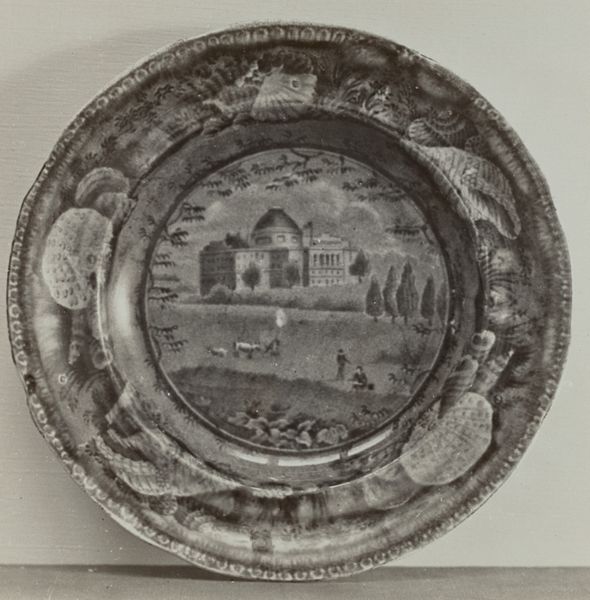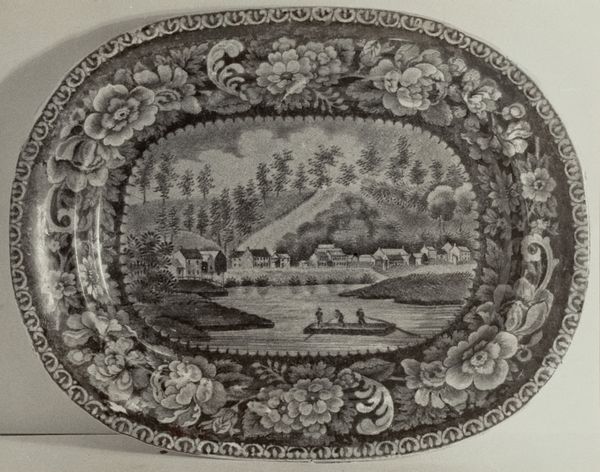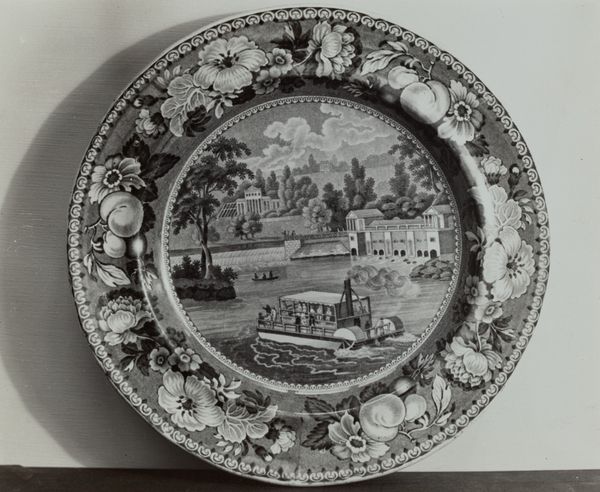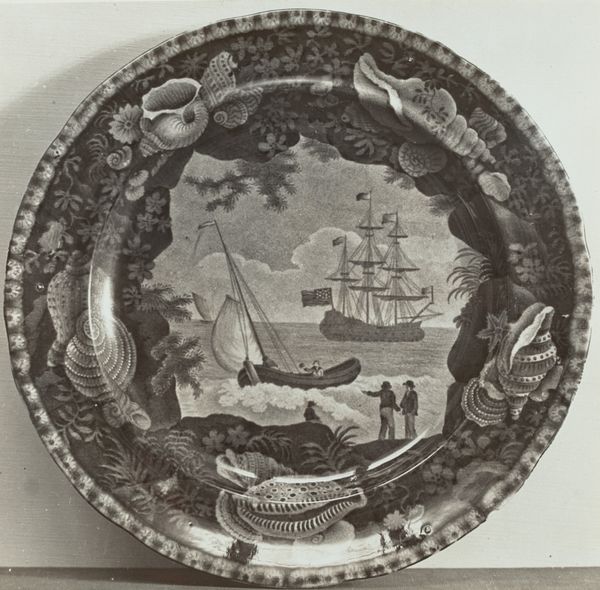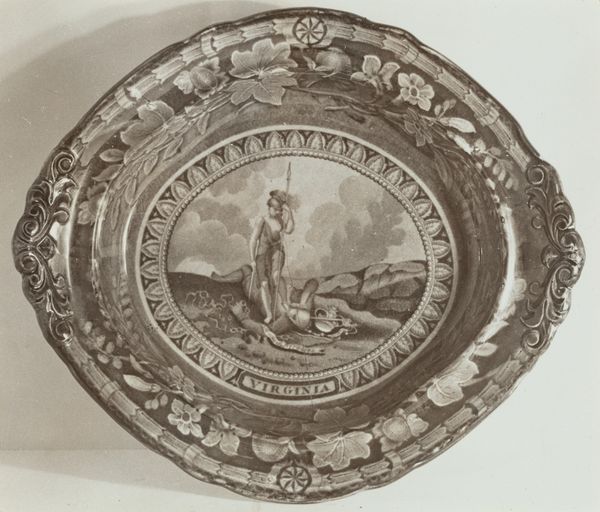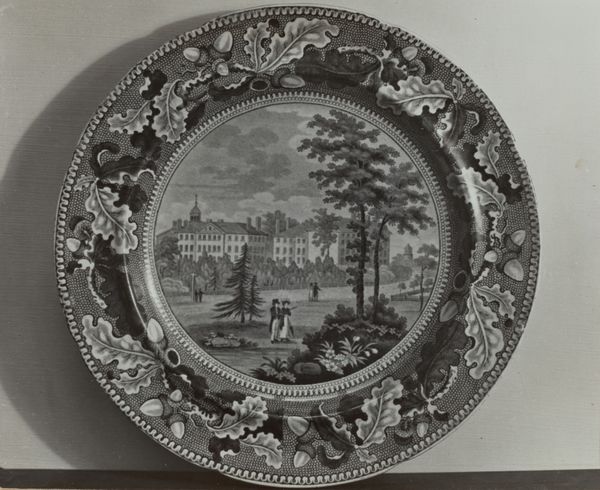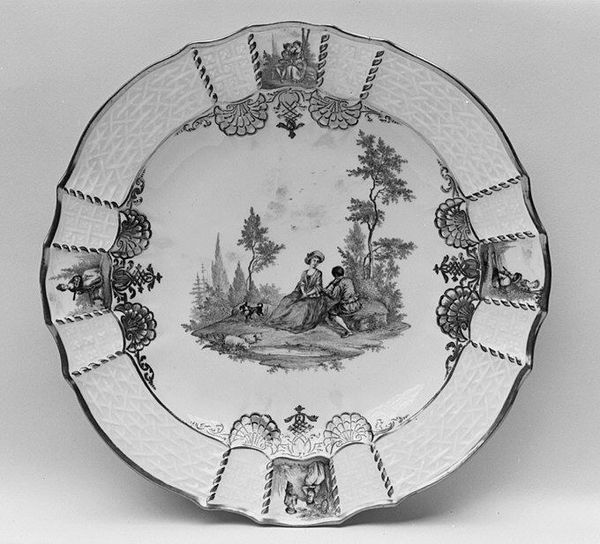
print, ceramic
# print
#
sculpture
#
old engraving style
#
landscape
#
ceramic
#
stoneware
#
orientalism
#
history-painting
Dimensions: overall: 20.3 x 25.4 cm (8 x 10 in.) Original IAD Object: 8 5/8" in diameter
Copyright: National Gallery of Art: CC0 1.0
Curator: Let's take a look at this transferware plate from around 1936. It's called "Erie Canal," and the scene depicted shows the aqueduct bridge at Little Falls. Editor: It's melancholic, in a way. That stark black and white against the ceramic gives it this removed, almost ghostly feel. A memory pressed onto a plate, you might say. Curator: Absolutely. It’s important to understand that these plates were mass-produced. They were designed to be accessible, depicting historical and scenic views intended to foster a sense of national identity. Consider how the Erie Canal, completed in 1825, radically altered trade routes and westward expansion. This plate is participating in the mythologizing of progress. Editor: The floral rim seems to frame that progress, almost suffocating it. It is very pretty, that stylized bloom, but I wonder about the contrast. Nature against industry, maybe? Curator: That tension is critical. These designs, sometimes called "oriental," borrow stylistic elements but are firmly rooted in colonialist representation. The romanticized landscape disguises the complex social and environmental impacts of projects like the Erie Canal, particularly for Indigenous communities. Editor: You know, it almost feels like looking through a stereoscope, or one of those old View-Masters. The image seems to jump out despite being completely flat. Is that intentional, a way to make history… immediate? Curator: I think it is. And by placing these narratives on everyday objects, it integrates ideology into the domestic sphere, normalizing a specific interpretation of history. Consider the class implications, too—who had access to these objects, and what values were they meant to uphold? Editor: That changes how I see the whole piece. Suddenly it feels like less a celebration and more a quiet kind of… indoctrination? Strange word, maybe, but I think it fits. Curator: These objects were powerful tools in shaping public perception, and in turn reinforced existing social hierarchies and biases that continued into the twentieth century and very much reverberate today. Editor: Food for thought, definitely. Or perhaps food *on* thought? I’m off to find more interesting objects...
Comments
No comments
Be the first to comment and join the conversation on the ultimate creative platform.
